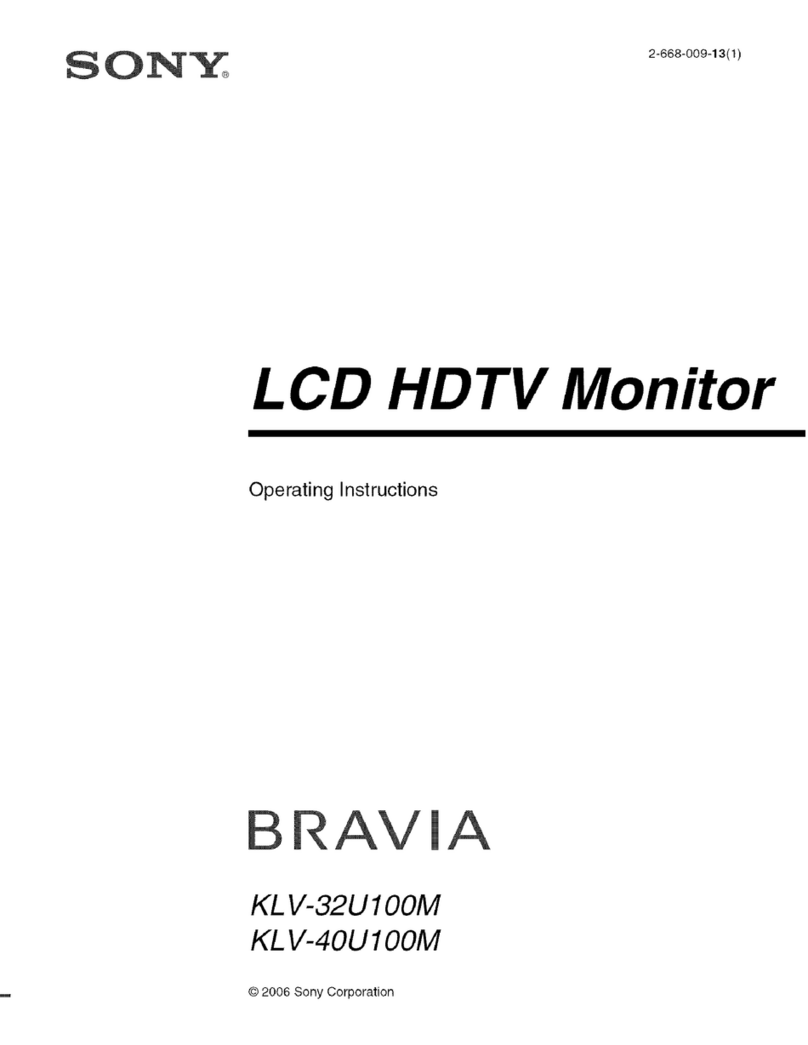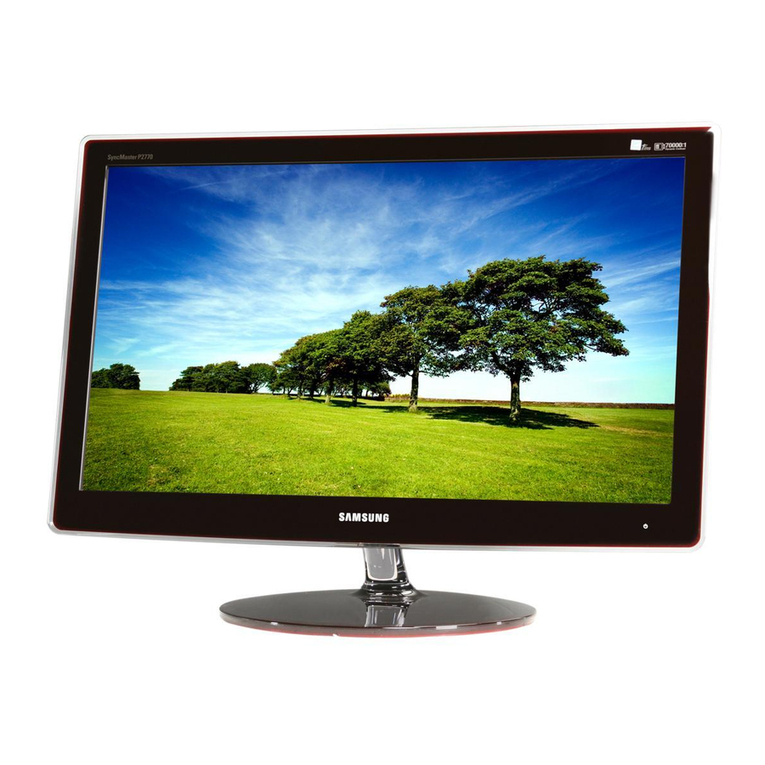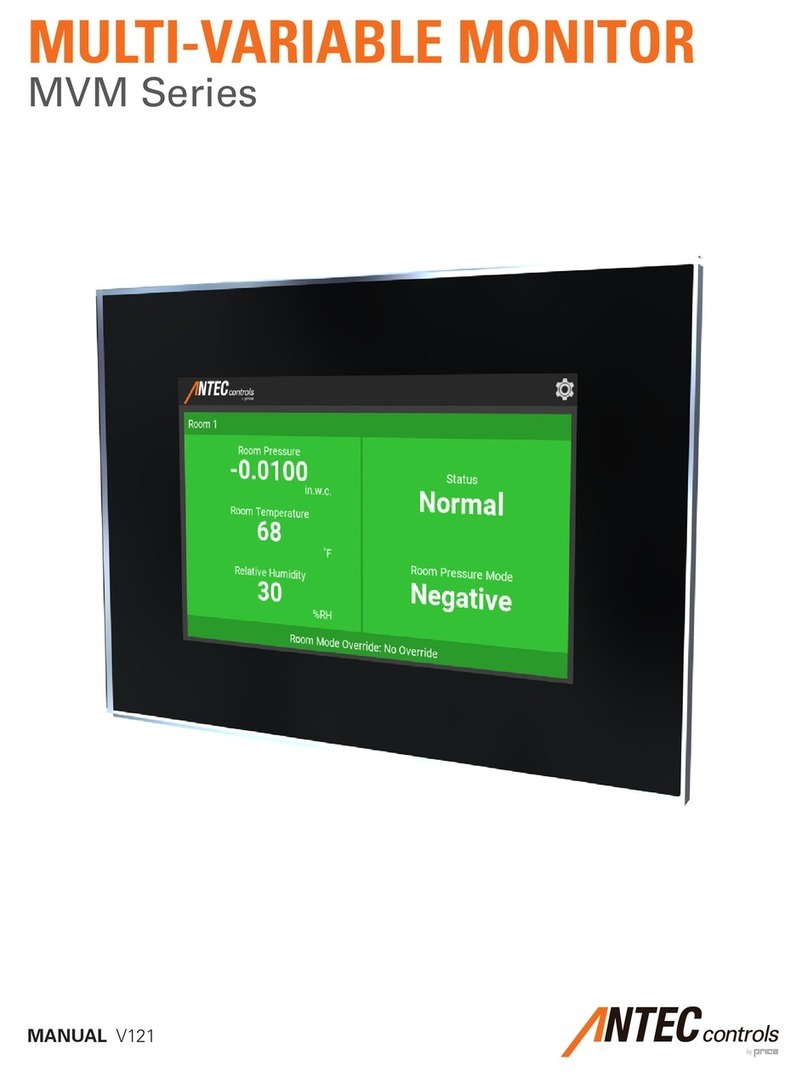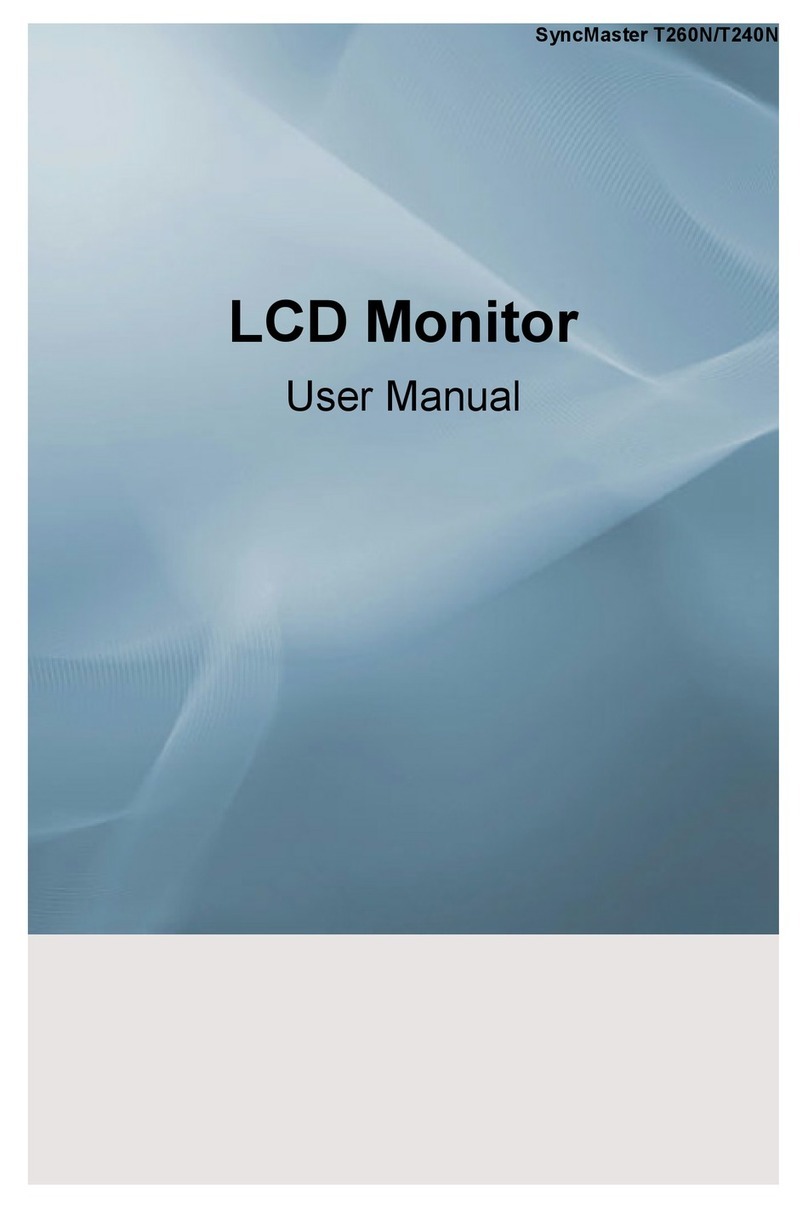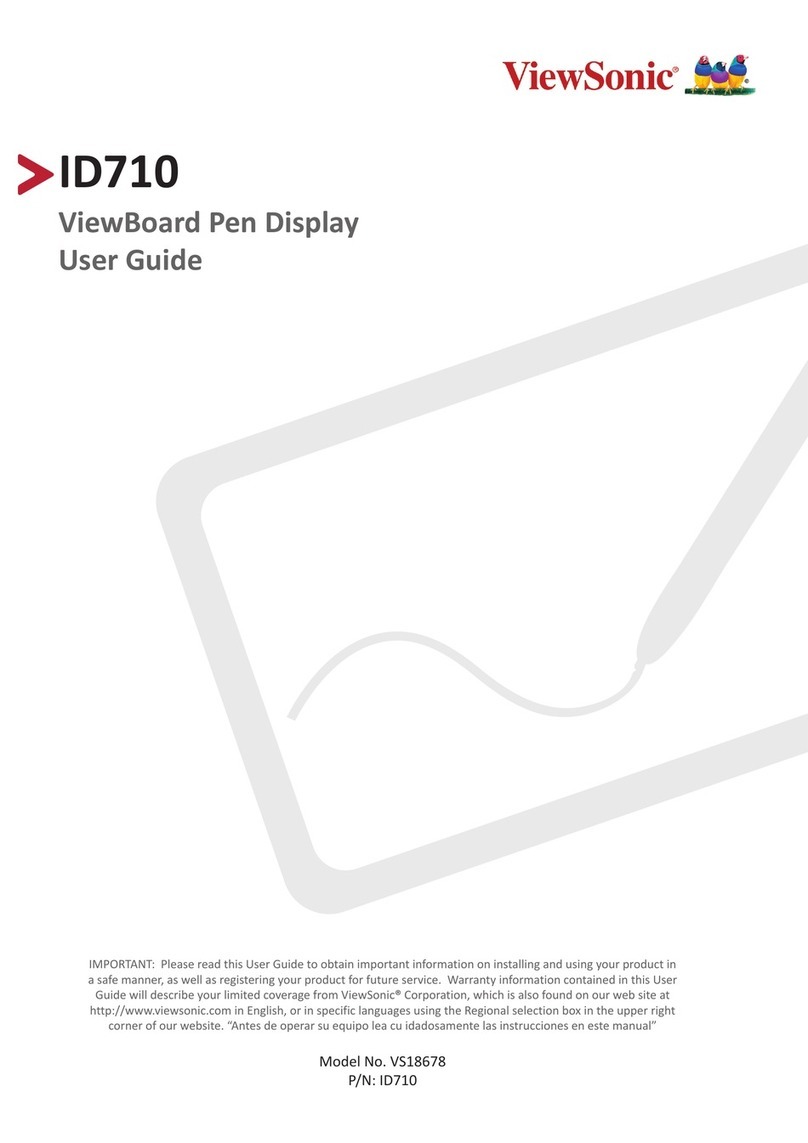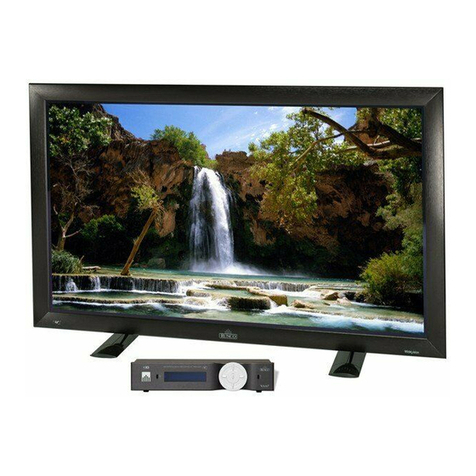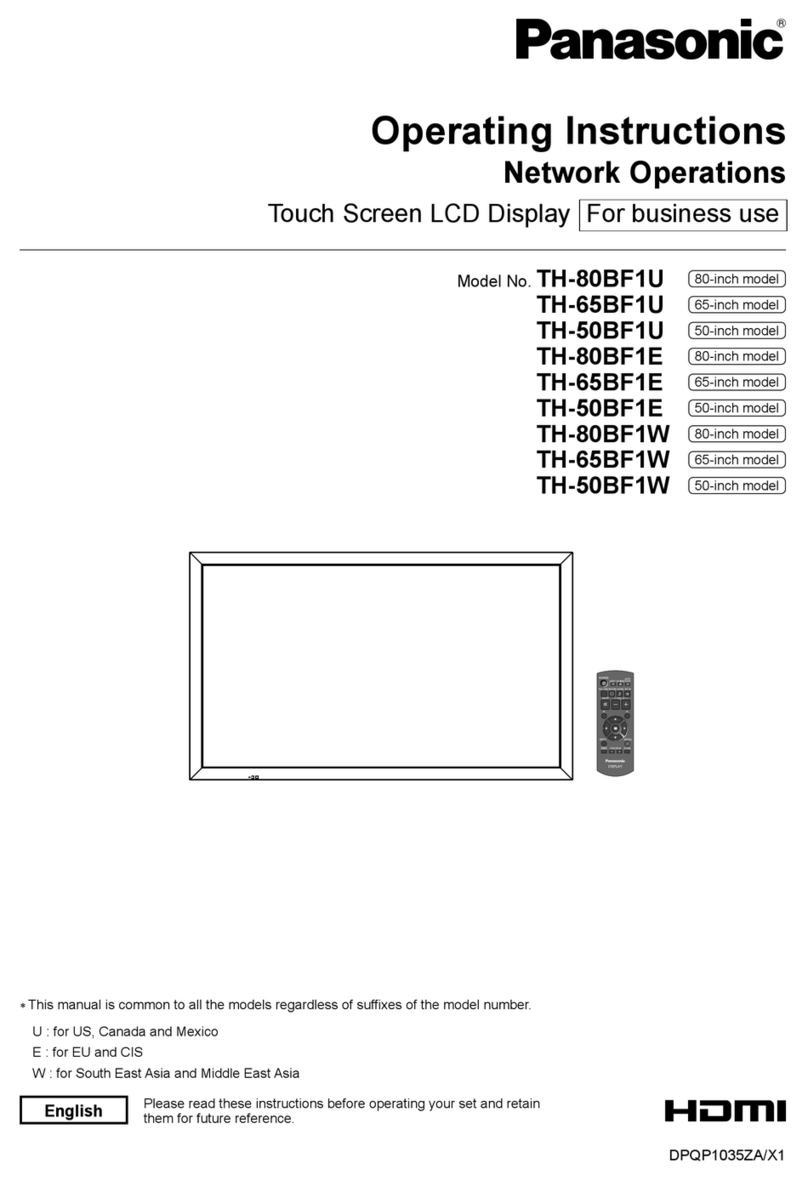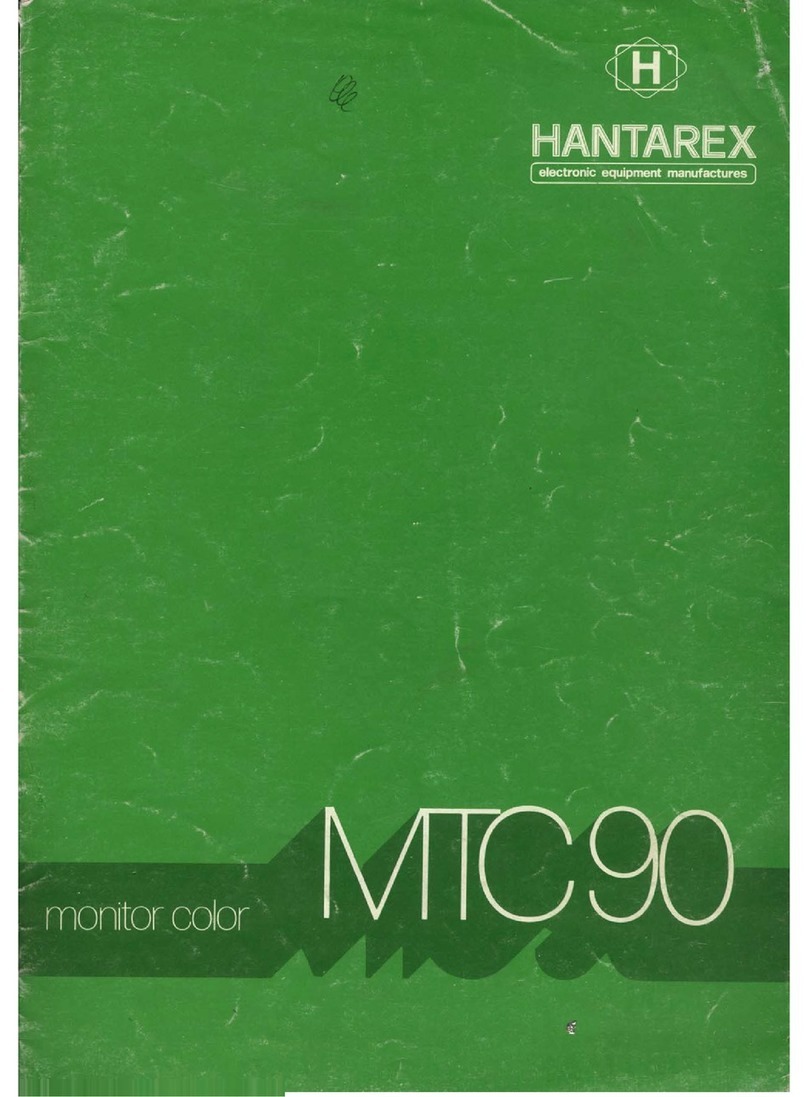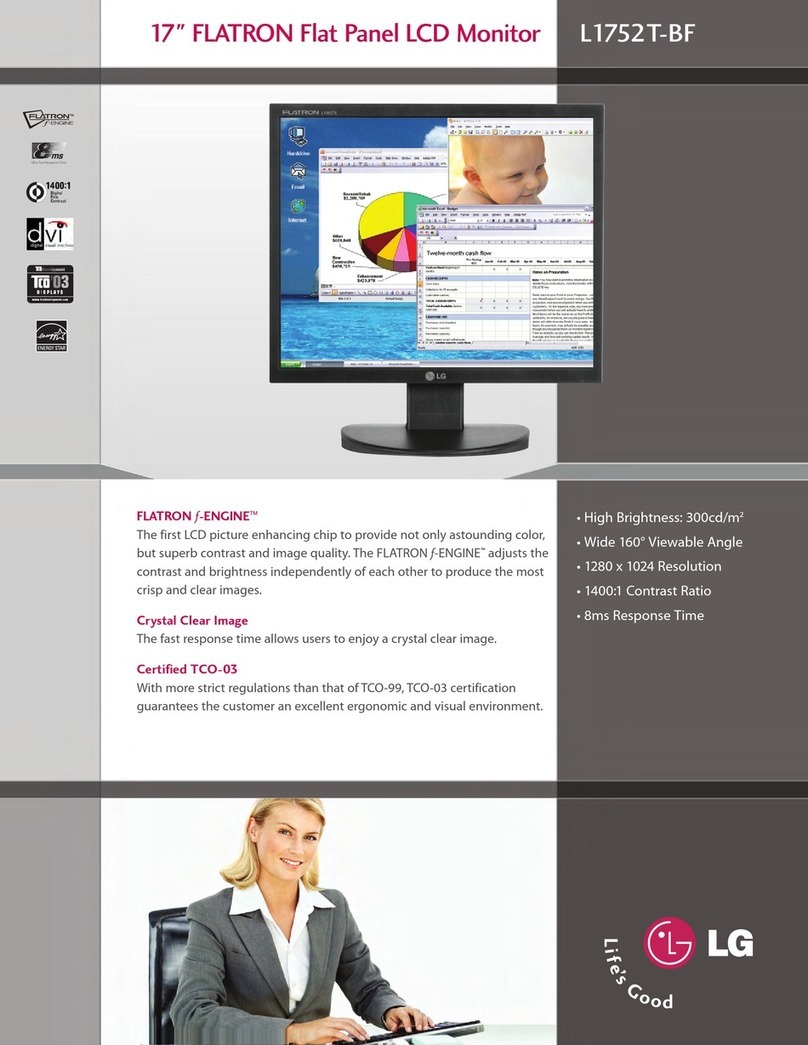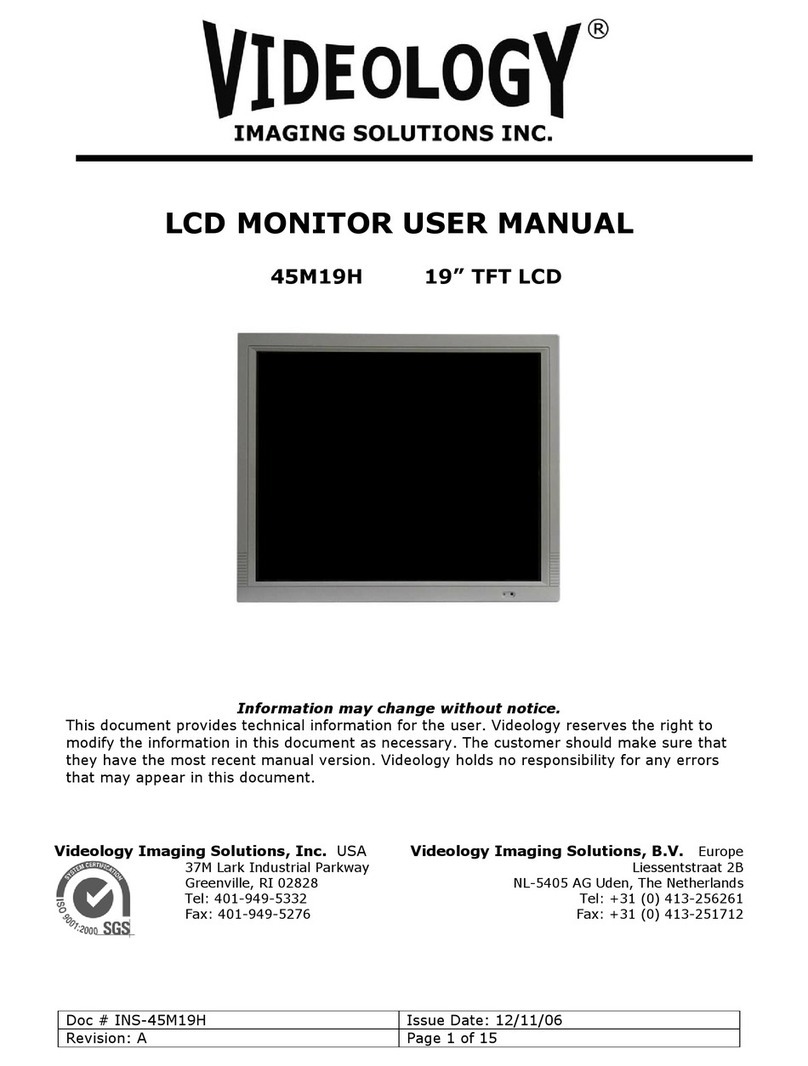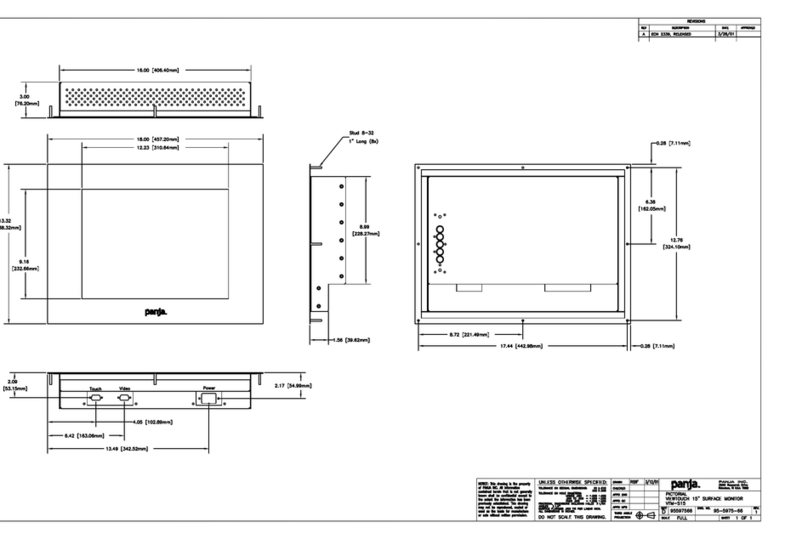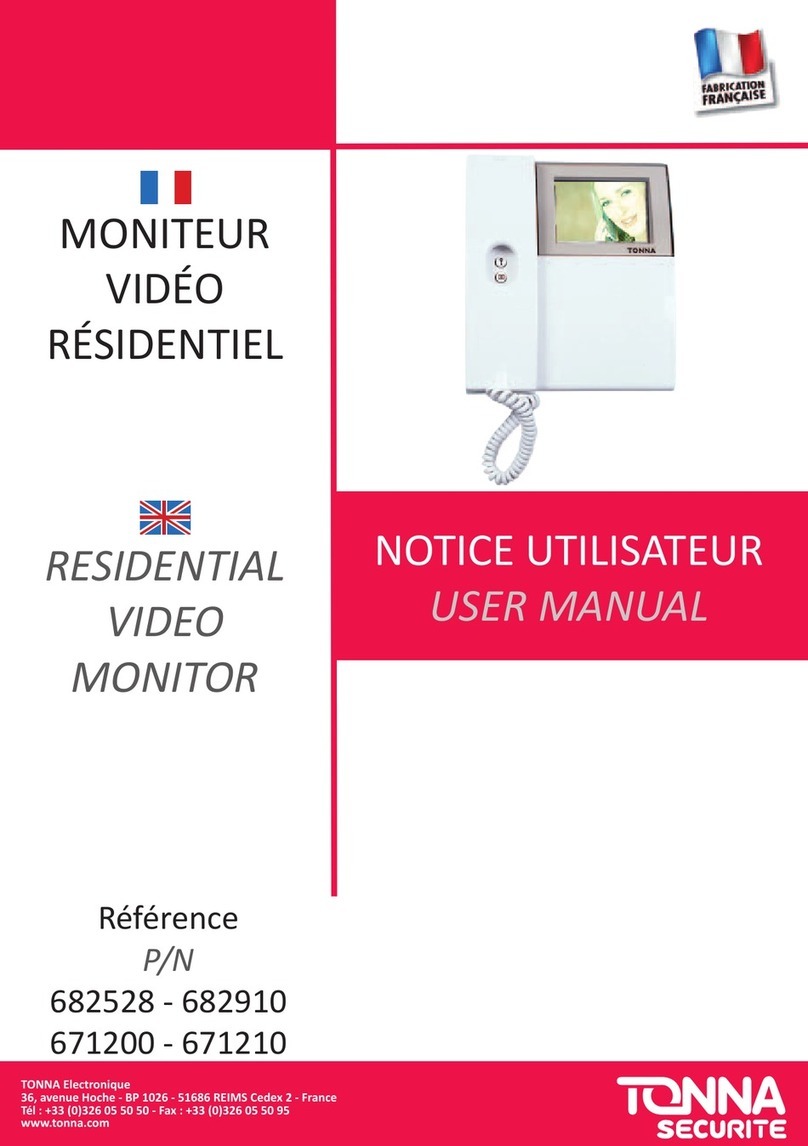MW Fly EM-m Technical manual

EM-m system use,
installation and
maintenance manual
document
E-DMA.I02.1
Edition Revision
A 1
TRANSLATED
FREE DISCLOSURE Page 1 of 99
EM-
m system use, installation and
maintenance manual

EM-m system use,
installation and
maintenance manual
document
E-DMA.I02.1
Edition Revision
A 1
TRANSLATED
FREE DISCLOSURE Page 2 of 99
In-flight use of the EM-m instrument
certifies that the user has
read and understood the contents of the installation manual and
the operating manual. Failure to follow the instructions contained
herein can cause serious injury and even death.
Refer to the aircraft instruction manual for additional
information.
All information, illustrations, instructions and technical data contained in
this manual has been upgraded before printing. MWfly reserves the right to
modify, correct or upgrade general data at any time without any obligation
or prior consent from third parties. Publication of any part of this document
without written consent of MWfly is strictly prohibited.
This Manual forms part of the EM-m system and must be kept safe. It must
accompany the EM-m in case of sale to a new owner. The original document
is written in Italian and this language will be used to settle any dispute of a
legal or technical nature.

EM-m system use,
installation and
maintenance manual
document
E-DMA.I02.1
Edition Revision
A 1
TRANSLATED
FREE DISCLOSURE Page 3 of 99
1. INDEX
2. INTRODUCTION 6
2.1. Premise 6
2.2. Notes for Consultation 6
2.3. Identification Data 8
2.4. Tools 8
2.5. Consumables 9
2.6. MWfly Authorized Service Centres 9
3. SAFETY 10
3.1. Premise 10
3.2. Security Elements 10
3.3. Use of technical documentation 12
4. DESCRIPTION 13
4.1. The system 13
4.1. User interface 13
4.3. Mechanical and electrical characteristics 15
4.3.1. Dimensions display EM-m 15
4.3.2 Electrical characteristics of the EM-m display 16
4.3.3 AUXBOX dimensions 18
4.3.4 AUXBOX electrical characteristics 19
4.3.5 AHRS Dimension 20
4.3.6 Electrical Characteristics AHRS 21
4.4. Page 1 “engine data” 21
4.4.1. SETPOINT and TARGET data 23
4.4.2. ROTOR datum 24
4.4.3. GEN A LED 24
4.4.4. CONS datum 24
4.4.5. USED datum 24
4.4.6. LED STATUS 24

EM-m system use,
installation and
maintenance manual
document
E-DMA.I02.1
Edition Revision
A 1
TRANSLATED
FREE DISCLOSURE Page 4 of 99
4.4.7. LED status ECUA 27
4.4.8. LED status ECUB 27
4.4.9. LED status “GENERATOR M” 27
4.4.10. LED status “GENERATOR A” 27
4.4.11. CHARGE A datum 27
4.4.12. Unit of measure 28
4.4.13. Bar graphs (blue-yellow-green-red arc) 29
4.5. Page 2 “diagnostics” 31
4.6. Page 3 “flight instrument” 34
4.7. Page 4 “flight instrument + HSI” 36
4.8. Page 5 “system configuration” 39
4.8.1. Set volume 41
4.8.2 Copy log file 42
4.8.3 Delete log files 45
4.8.4 Technical data 46
4.8.5 Display system 49
4.8.6 Pitch offset 50
4.8.7 Speed limit 51
4.8.8 Destination 52
4.8.9 CAN2CAN update 53
4.8.10 Tools configuration 54
4.8.11 Service 65
4.8.12 Reserved 67
4.8.13 file conf 68
4.8.14 Data time 69
4.8.13 Auxbox update 70
4.9. Alarm 71
4.10 VPP Control 76
4.11 log files 76

EM-m system use,
installation and
maintenance manual
document
E-DMA.I02.1
Edition Revision
A 1
TRANSLATED
FREE DISCLOSURE Page 5 of 99
5. INSTALLATION 78
5.1. AUXBOX 79
5.2 Instrument EM-m 83
5.3. AHRS 85
5.4. Settings and checks 89
5.4.1. Check functions 89
5.4.2. Check auxbox module temperature 89
5.4.3. First flight 90
6. OPERATING INSTRUCTIONS 91
6.1. General criteria of use 91
6.1.1. Before starting 91
6.1.2. Before take off 91
6.1.3. In flight 92
6.2. Communication of operating anomalies 92
7. MAINTENANCE 94
7.1. Premise 94
7.2. General Rules for Maintenance 95
7.3. System logbook 95
7.4. Control Tightening Torques 96
7.5. Scheduled Maintenance 96
7.6. Unscheduled maintenance 97
7.6.2. Electrocution 97
8. SIGNATURES AND LIST OF REVISIONS TO THE DOCUMENT 99

EM-m system use,
installation and
maintenance manual
document
E-DMA.I02.1
Edition Revision
A 1
TRANSLATED
FREE DISCLOSURE Page 6 of 99
2. INTRODUCTION
Please read this manual carefully before using the engine and apply all safety
standards contained in it, in addition to those that your experience and common sense
suggest.
Remember that regular maintenance and a thorough inspection before take-off are
essential safety factors.
MWfly will be happy to provide you with further information and all the assistance you
may need.
2.1. Premise
Before using the EM-m, it is necessary to understand all the contents of this manual.
In case any passage is difficult to understand or in case of doubts, please contact
MWfly or an authorized centre in writing, requesting clarification.
It is also necessary to add to the contents of this chapter with what is prescribed and
recommended by the aircraft manufacturer as well as suggested by one's own
experience.
This EM-m instrumentation has not received any
certification for suitability for aeronautical use.
Its use is intended exclusively for experimental or non-
certified aircraft, on which any engine failure does not
compromise flight safety.
Use the propeller in accordance with the rules and laws in force.
2.2. Notes for Consultation
The original language in which this document was issue is Italian: Italian is the
reference language for any dispute.
The manual is divided into sections; each section is divided into chapters; each
chapter is divided into paragraphs; within each paragraph there may be a further
subdivision into topics. The title of each section, chapter, paragraph or topic is
highlighted as follows.
SECTION
Chapter

EM-m system use,
installation and
maintenance manual
document
E-DMA.I02.1
Edition Revision
A 1
TRANSLATED
FREE DISCLOSURE Page 7 of 99
Paragraph
Topic
The numbering of the contents of the manual consists of an alpha-numeric code that
follows the following criterion.
6.1.3.
The first number indicates the section.
The second number indicates the chapter of each section.
The third number indicates the paragraph of each chapter; it is not always present.
The naming of the figures follows the same criteria for the first two parts; the third
part invariably represents the cardinal numbering of the figure itself; the letter P is
added at the end of the code (e.g. 5.2.2.P).
The naming of the tables follows the same criteria for the first two parts; the third
part invariably represents the cardinal numbering of the table itself; the letter C is
added at the end of the code (e.g. 4.3.1.C).
The measurement system used in the manuals is the technical system (ST); in the
tables the unit of measurement of the quantities represented is indicated enclosed in
square brackets [].
The symbols used in the manuals are as follows.
WARNING: Not following this instruction can cause severe
personal injury or loss of life.
CAUTION: Not following this instruction could cause severe
damage to the propeller.
INFORMATION: Refers to supplementary information to
completely or fully understand the instruction.
1., 2., ... This numbering is used to list tools and consumables needed to run an
installation or maintenance; it is also used to bring in parts lists or engine
parts shown in the illustrations.
a., b., … This lettering is used to indicate a list of actions or subjects with relation
to inclusion: all of the actions or options listed must be verified.

EM-m system use,
installation and
maintenance manual
document
E-DMA.I02.1
Edition Revision
A 1
TRANSLATED
FREE DISCLOSURE Page 8 of 99
o This symbol is used to indicate a list of actions or subjects with relation to
exclusion: only one of the actions or options listed with this symbol must
be verified.
This symbol is used to list the general characteristics of the EM-m,
component specifications or options for installation or maintenance.
2.3. Identification Data
The serial number of the EM-
m control instruments is printed on an indelible label
applied to the rear of the instrument and consists of an 8-
digit numeric code of the
type:
YY.WW.NNNN
Where:
YY is the year of production
WW is the weak of production
NNNN is a progressive number
Changing or deleting this code causes the immediate revocation of the guarantee and
frees MWfly from any obligation towards the user.
For any request for information or spare parts it is necessary to indicate the model
and serial number of the product.
2.4. Tools
The standard workshop tools and tools (not included with the propeller supply)
specifically designed to carry out installation and routine maintenance on the propeller
are listed below. The same equipment is listed and numbered at the beginning of each
paragraph describing operations: the number will be recalled in square brackets to
indicate the use of the associated equipment, in the specific action; in the case of
combined use of several tools, they will be recalled separated by the semicolon sign;
in the case of combined use of torque wrench and insert, they will be recalled
separated by the + sign
Standards workshop tools
Allen key 4 mm

EM-m system use,
installation and
maintenance manual
document
E-DMA.I02.1
Edition Revision
A 1
TRANSLATED
FREE DISCLOSURE Page 9 of 99
If the use of a torque wrench is prescribed in the description of the
maintenance operations, the corresponding inserts necessary to
perform torque tightening must be added to all the tools listed.
2.5. Consumables
Use only the specified components and consumables, or technically equivalent
components and materials for carrying out maintenance work; spare parts must be
original in order not to void the warranty and not to compromise reliability and safety.
When using chemical materials, it is necessary to comply
with the local legislation in force for disposal, as they are
special waste. When using, take the utmost care to protect
yourself and the environment from possible contamination.
Weak threadlocker
Medium threadlocker
Vaseline
The consumables are also listed and numbered at the beginning of each paragraph
describing maintenance operations and referred to during the description of the
maintenance phases.
2.6. MWfly Authorized Service Centres
For further information on maintenance or spare parts service, please contact the
nearest MWfly service centre.

EM-m system use,
installation and
maintenance manual
document
E-DMA.I02.1
Edition Revision
A 1
TRANSLATED
FREE DISCLOSURE Page 10 of 99
3. SAFETY
3.1. Premise
Just reading this manual will not eliminate the hazards connected with the installation
and use of the product. However, the understanding and application of the information
herein is essential to use the propeller in a proper and safe way, and reduces the
causes of potential risk.
The information, components, system descriptions, pictures, tables and technical data
contained in the present manual are correct at the time of publication. MWfly,
however, maintains a policy of continuous improvement of its products without
imposing upon itself any obligation to install them on its products previously
manufactured: should such an eventuality arise, MWfly, through its distribution and
assistance network, as well as through the website www.mwfly.it, will disclose the
mandatory nature of any update.
The choice to install and use this EM-m instrument is entirely subject to the discretion
and responsibility of the manufacturer, assembler and owner of the aircraft: MWfly
cannot guarantee the suitability for use of the product on each specific type of aircraft
due to the variety of design and project to which the aircraft themselves are subject;
for this reason MWfly is not responsible, nor can it issue any form of guarantee
regarding components, accessories or parts of the aircraft that may be damaged
during the installation or operation of the propeller. The user assumes all risks arising
from the use of the product and acknowledges that he is aware of the above.
MWfly reserves the right to make changes at any time, without notice and without
incurring any obligation. No part of this publication may be reproduced without written
permission.
3.2. Security Elements
For your safety, here are some important tips, suggested by common sense and by
the usual norms of prudence, without however being able include all of the situations
or behaviours that constitute opportunities for potential risk.
The prescribed tightening torques must be strictly observed
to avoid the risk of detachment of components during the
use of the engine: non-compliance invalidates all forms of
warranty and automatically releases MWfly from any
liability.

EM-m system use,
installation and
maintenance manual
document
E-DMA.I02.1
Edition Revision
A 1
TRANSLATED
FREE DISCLOSURE Page 11 of 99
Always carry out an adequate inspection before starting the
engine: this helps prevent accidents or damage. In case of
doubt about the efficiency of EM-m instrument, do not fly.
Never leave the aircraft while the engine is running.
Always keep the EM-m system in perfect working order by following
the maintenance table contained in the maintenance manual and
carrying out the servicing at the scheduled intervals
Write down any operating anomalies in the propeller logbook. Never
fly before you have solved the problem and noted the correction in
the logbook.
To use the EM-m system, strictly comply with all national and local
laws and regulations
This EM-m system has received no airworthiness certification. Its use
is intended exclusively for experimental or non-certified aircraft, on
which any failure does not compromise flight safety. The user
assumes all risks arising from the use of the propeller and
acknowledges that he is aware of the above.
The EM-m system must be used only by users trained and
authorized for the purpose, as well as informed about the potential
hazards arising from its use.
The description and illustration of components or parts of the
propeller refers to the configuration at the time of publication of
the manual. The sole purpose of the illustrations is to allow the
identification of the parts and to assist in the operations: they are
therefore not to be interpreted as technical drawings or as
representations of reality..
If there are divergences between what is specified in this manual and the current
technical legislation, you must proceed according to the most stringent rule.

EM-m system use,
installation and
maintenance manual
document
E-DMA.I02.1
Edition Revision
A 1
TRANSLATED
FREE DISCLOSURE Page 12 of 99
3.3. Use of technical documentation
The technical documentation and the directives are to be considered the necessary
tool for personal training, but they cannot in any way replace an adequate specific
instruction, both theoretical and operational.
The information provided in the propeller manuals contain procedures and checks that
can be carried out by qualified professionals operating in the sector under normal
operating conditions.
The information relating to the propeller can be found in the following documents.
Installation, use and maintenance manual: contains the information necessary for
installation, use and scheduled maintenance of the propeller. It also contains the
list of spare parts available.
Overhaul manual: contains the information necessary to perform a complete
overhaul of the propeller following the achievement of the maximum hours of use
(TBO) or serious damage.
Service Letter: Contains information aimed at improving the product or its use.
Service Bulletin: reports the replacements, checks or warnings to be applied by
the indicated deadline.
Alert Bulletin: reports the replacements, checks or warnings to be applied
compulsorily before the next flight
Frequent technical modifications and the variety of installations
may make the information contained in the aforementioned
manuals inapplicable, inadequate or insufficient.
The illustrations in this manual do not represent the details of the product in detail,
but provide an indication of their function and structure: for this reason, it is not
possible to obtain dimensional information or verify details from the published
illustrations.
All further documentation that may be required is available at MWfly authorized
service centre.

EM-m system use,
installation and
maintenance manual
document
E-DMA.I02.1
Edition Revision
A 1
TRANSLATED
FREE DISCLOSURE Page 13 of 99
4. DESCRIPTION
The MW engines of the SPIRIT series can be equipped with the EM-m instrument.
The EM-m instrument is an 8” display for viewing engine data. The instrument has
been designed to connect directly to the CAN line of the engine control units that are
on the MWfly engines receiving the data transmitted by the control units.
The engine control units are on the MW engines use a proprietary
CAN protocol and therefore this tool cannot be used on other
engines.
In addition to displaying engine data, the EM-m instrument integrates the following
information or function:
Integrated data acquisition
View ECU diagnostics
Visualization of engine technical data
Display of calculated data (such as consumption, flight time, etc.)
Alarms
Recall of scheduled maintenance
Setting of RPM target for MWfly VPP
HSI (optional)
AHRS (optional)
CAN AEROSPACE output (optional)
Some of the information or functions indicated are accessible from the main page, others
on other pages described below.
4.1. The system
The system consists of:
EM-m display: user interface
AUXBOX unit : additional channel expansion and control module
AHRS (optional): inertial platform and differential pressure sensor for pitot tube
4.1. User interface
The EM-m instrument is a panel instrument designed for displaying engine data and
other information. In order to make access to all the information easy, the instrument
has 6 buttons on the front of the dashboard, each with a specific function, and a multi-

EM-m system use,
installation and
maintenance manual
document
E-DMA.I02.1
Edition Revision
A 1
TRANSLATED
FREE DISCLOSURE Page 14 of 99
turn encoder. Also, on the front of the instrument there is a USB socket for
downloading the acquisition data or for updating the instrument SW.
Display 8”
High brightness
USB port
for data
Download
button 1:
engine data page
button 5: conf. page
button 6: audio
alarm off
11
Multi-function
Knob
button 2: diagnostic
button 3: flying page 1
button 4: HSI + flying page
4.1.1.P
The following commands are found on the front of the instrument:

EM-m system use,
installation and
maintenance manual
document
E-DMA.I02.1
Edition Revision
A 1
TRANSLATED
FREE DISCLOSURE Page 15 of 99
n
ame
F
un
tion
Button
1
Access page 1 "engine data"
Button
2
Access page 2 "diagnostics"
Button
3
Access page 3 "flight page"
Button
4
Access page 4 “flight page +
HIS”
Button
5
Access page 5 "configuration"
Button
6
Temporary deactivation of audio alarm
Knob Multi-turn encoder for menu navigation and engine speed target
adjustment
USB Port for data download and SW update
4.1.1.C
4.3. Mechanical and electrical characteristics
4.3.1. Dimensions display EM-m
The following drawing shows the dimensions of the instrument, in paragraph 5.2
The dimensions for the cut to be made on the instrument panel for installing the
instrument.
4.3.1.P

EM-m system use,
installation and
maintenance manual
document
E-DMA.I02.1
Edition Revision
A 1
TRANSLATED
FREE DISCLOSURE Page 16 of 99
The weight of the EM-m display is 1.210 g
4.3.2 Electrical characteristics of the EM-m display
The electrical characteristics of the EMS instrument:
• 12V power supply (range 9 .. 16 V) max 2.5A
• Secondary power input
• Operating temperature from -20 to +50°C
• 2 inputs for resistive level sensors and 5 analog inputs
• 3 inputs for NTC temperature sensors (one is dedicated to air temperature)
• 10 digital inputs including 2 rpm sensors
• 2 digital outputs 1 npn 1 pnp
• CAN bus communication
• Sensor and GPS unit power supply redundancy
• Internal backup to ensure correct saving of data even in the event of a sudden
power failure
• Dedicated mast RPM sensor input
• Optional integrated GPS (external antenna).
• Integrated pressure sensors for altitude and speed
• Connection to the AHRS inertial unit
• Audio output for alarms
• External button for page change
• LTE connection for remote log
• Additional independent 32Gb logger
Since the EM-m is a panel instrument, all the electrical connections are located on the
rear side of the instrument itself.
The following connectors are located on the back of the EM-m:

EM-m system use,
installation and
maintenance manual
document
E-DMA.I02.1
Edition Revision
A 1
TRANSLATED
FREE DISCLOSURE Page 17 of 99
4.3.3.P
n
ame
t
ype
descr
iption
POWER
DB 9
way male
Instrument power
supply
MAIN DB 15 ways female For connection to the CAN line of the control
units and AUXBOX and for the connection of
the generator light and Shunt
AHRS
DB 9
ways female
For connecting external
AHRS
4.3.1.C
The pin out of the connectors is available in the "installation" chapter

EM-m system use,
installation and
maintenance manual
document
E-DMA.I02.1
Edition Revision
A 1
TRANSLATED
FREE DISCLOSURE Page 18 of 99
4.3.3 AUXBOX dimensions
The AUXBOX is a module that has the following functions:
expansion of analogue and digital channels
variable pitch propeller control (optional feature)
throttle control for helicopter applications (optional feature)
the dimensions of the AUXBOX are shown in the following figure:

EM-m system use,
installation and
maintenance manual
document
E-DMA.I02.1
Edition Revision
A 1
TRANSLATED
FREE DISCLOSURE Page 19 of 99
4.3.3.P
the weight of the AUXBOX is 250g.
4.3.4 AUXBOX electrical characteristics
The electrical characteristics of the AUXBOX are:
12V power supply (range 9 .. 16 V) max 2.5A
Secondary power input
Operating temperature from -20 to +50°C
2 inputs for resistive level sensors and
Fuel pressure input
Oil pressure input
Map pressure sensor input (only for B22 and B25 engine version)

EM-m system use,
installation and
maintenance manual
document
E-DMA.I02.1
Edition Revision
A 1
TRANSLATED
FREE DISCLOSURE Page 20 of 99
2 programmable analog inputs
Gear oil temperature input
Fuel temperature sensor
1 additional NTC input
5 digital inputs including 2 RPM sensors
2 digital outputs (1NPN 1 PNP)
STEPPER motor control integrated
CAN bus communication
Serial communication port
Dedicated rotor RPM sensor input
LTE connection for remote log
The pin out of the connector is available in the "installation" chapter
4.3.5 AHRS Dimension
AHRS (Altitude and Heading Reference System) is a module which integrates a
differential pressure sensor to be connected to the static and dynamic pressure of a
pitot tube, and an inertial platform. Through the information transmitted by the AHRS
module, the EM-m instrument is able to determine the quantities that are displayed
in the two flight pages (see chapters 4.6 and 4.7).
The dimensions of the AHRS are indicated in the figure below
Table of contents
